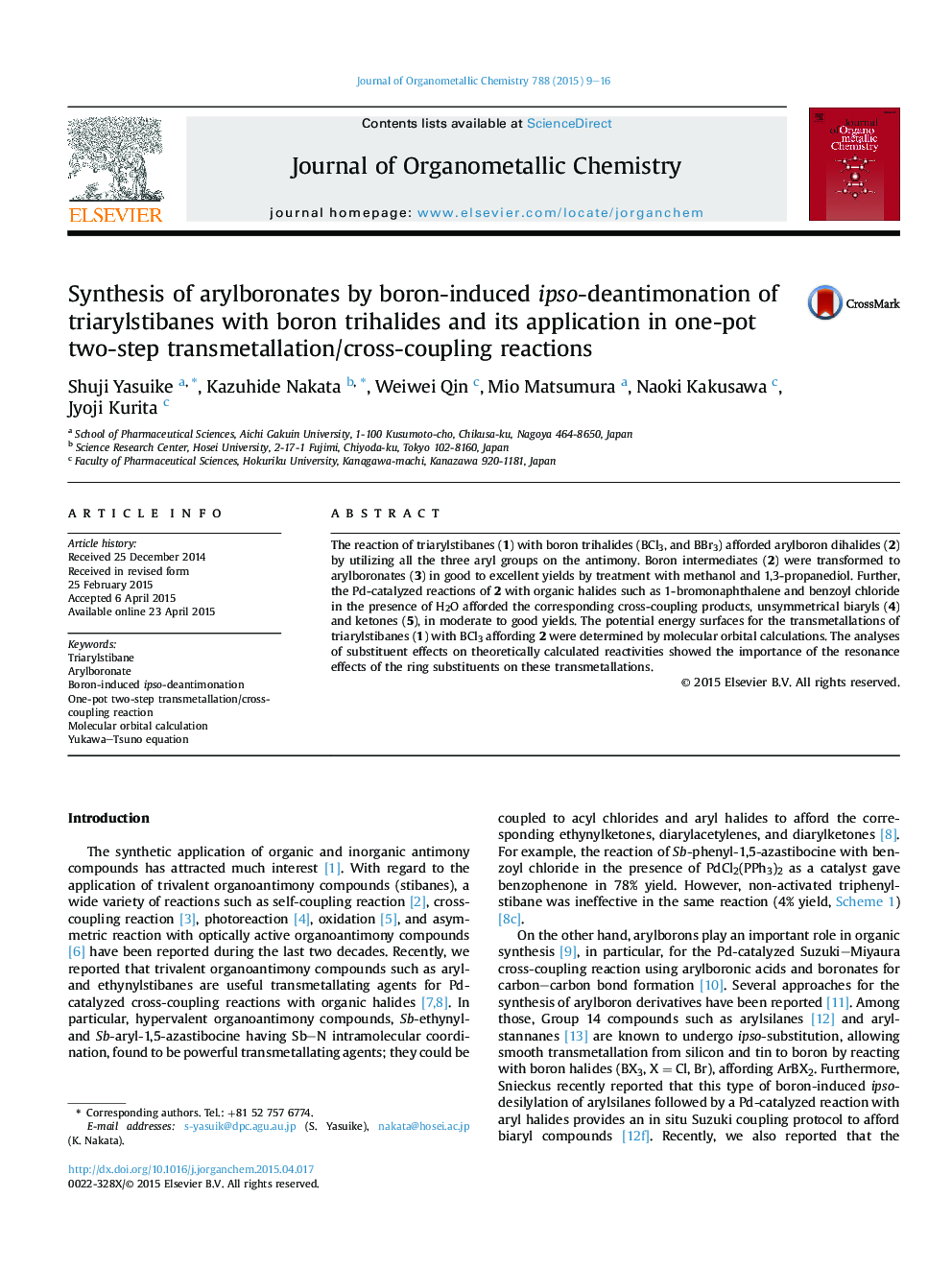| کد مقاله | کد نشریه | سال انتشار | مقاله انگلیسی | نسخه تمام متن |
|---|---|---|---|---|
| 1325130 | 1499854 | 2015 | 8 صفحه PDF | دانلود رایگان |

• The reaction of triarylstibanes with boron trihalides afforded arylboron dihalides.
• A one-pot two-step method was developed for preparing of unsymmetrical biaryls and ketones.
• Substituent effects were analyzed on theoretically determined activation energies.
The reaction of triarylstibanes (1) with boron trihalides (BCl3, and BBr3) afforded arylboron dihalides (2) by utilizing all the three aryl groups on the antimony. Boron intermediates (2) were transformed to arylboronates (3) in good to excellent yields by treatment with methanol and 1,3-propanediol. Further, the Pd-catalyzed reactions of 2 with organic halides such as 1-bromonaphthalene and benzoyl chloride in the presence of H2O afforded the corresponding cross-coupling products, unsymmetrical biaryls (4) and ketones (5), in moderate to good yields. The potential energy surfaces for the transmetallations of triarylstibanes (1) with BCl3 affording 2 were determined by molecular orbital calculations. The analyses of substituent effects on theoretically calculated reactivities showed the importance of the resonance effects of the ring substituents on these transmetallations.
The reaction of triarylstibanes with boron trihalides afforded arylboron dihalides by utilizing all the three aryl groups on the antimony. Boron intermediates were transformed to arylboronates by treatment with methanol and 1,3-propanediol. The Pd-catalyzed reactions of boron intermediates with organic halides afforded the corresponding cross-coupling products, unsymmetrical biaryls and ketones.Figure optionsDownload as PowerPoint slide
Journal: Journal of Organometallic Chemistry - Volume 788, 15 July 2015, Pages 9–16